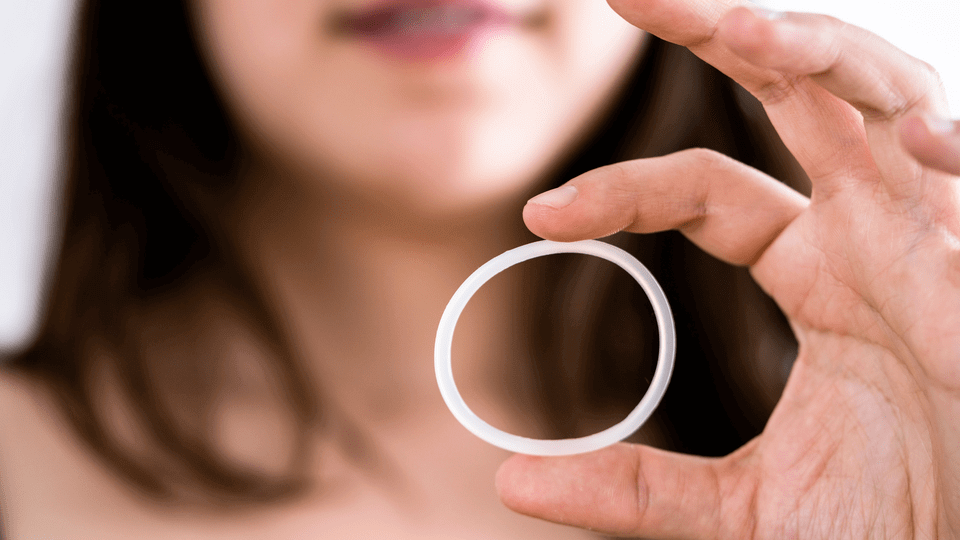Contraception:
Choosing The Right Type For You


What is The Contraceptive Pill?
There are two types of contraceptive pills. They both have different combinations of hormones and so work in different ways.
The Combined Contraceptive Pill
Combined contraceptive pills contain two hormones – oestrogen and progesterone. As you may know, there are many different brands of combined contraceptive pills. Each of these will have varying amounts and types of oestrogen and progesterone but they will work in the same way. Because of this, it may take a little trial and error to find the right one for you.
Traditionally, the combined pill is taken in a 28-day cycle. You take the pill for 21 consecutive days and then have a 7-day pill-free break before starting your next pack. However, there are now alternative options to choose from when using a combined pill. These provide more reliable contraceptive cover and better bleeding control. This is known as “tailored pill-taking”:
- Take the pill for 21 days and then take a 4-day pill-free break.
- Take 3 pill packs together with no break and then take a 4-day pill-free break before starting the next packets and repeating this cycle.
- Take the pill continuously until you spot/ bleed for 2 days. Then, take a 4-day pill-free break before restarting the pill again, taking the next pill-free break when spotting occurs again.
Make sure you start the next pill packet after the recommended pill-free break, regardless of your bleeding pattern.
It is essential that you take your pill around the same time every day.
The Progesterone-Only Pill
As the name suggests, the progesterone-only pill only contains progesterone. Sometimes this pill is called the “mini-pill” as it only contains one type of hormone.
Although using the mini-pills comes with fewer associated risks than the combined pill, it does not offer the same cycle control and your bleeding pattern can be unpredictable when using this, particularly in the first 2-3 cycles of use. It is then common to settle into a bleeding pattern where you may not get a period for months at a time. This type of pill is taken every day – there is no break between packets.

What is The Contraceptive Patch?
Just like the combined contraceptive pill, the contraceptive patch contains both oestrogen and progesterone. These hormones are absorbed through the skin and into the bloodstream. If you have trouble remembering to take a pill every day, the contraceptive patch might be a good option for you. Each patch remains in place for 3 weeks, then, you take a patch-free break for 4 days before placing a new patch on the skin.
Alternatively, there are other methods of using the contraceptive patch, this is known as “tailored patch-use”. This can be done as follows:
- As we mentioned above, you can use a patch for 3 weeks and then remove it for a 4-day patch-free break. Then you place a new patch on the skin and start the cycle again.
- Applying a new patch every week for 9 weeks and then taking a patch-free break for 4 days.
- Continuous use of the patch by applying a new patch every week for at least 3 weeks until there is spotting for 2 days. Then, take a 4-day patch-free break before applying a new patch and doing so every week until spotting occurs again.
What is The Contraceptive Ring?
The contraceptive contains both oestrogen and progesterone and works in a similar way to other combined contraceptives. This small, soft, silicone ring contains both oestrogen and progesterone. However, instead of sticking it to the skin, like the patch, you place a new ring into the vagina every month.
This ring stays in place for 21 days, then it is removed for a 4-day break, after which you insert a new ring and start a new cycle. The contraceptive ring is very small and it works by releasing hormones slowly into the bloodstream via the vaginal wall. It is not usually felt and it does not interfere with sexual activity.
There are other ways that you can use contraceptive rings. This is called “tailored use of the contraceptive ring”. You can do this by:
- Insert a ring and leaving it in place for 21 days, as mentioned above. Then, you can remove it and take a 4-day ring-free break. After this break, you insert a new ring and start the cycle again.
- Inserting a new ring every 3 weeks for 9 weeks (i.e. 3 times in a row without taking a break). Then, you take a ring-free break for 4 days before inserting a new ring and starting the cycle again.
- Using the ring continuously (inserting a new ring every 3 weeks) until there is spotting for 2 days. Then, you remove the ring and take a 4-day break before inserting a new ring. You can continue this pattern of use until you experience spotting again.
As you don’t need to change the contraceptive ring every day, it is an excellent and effective alternative to birth control pills. So if you find yourself forgetting to take your pills daily this might be a better option for you.

Factors to Consider When Choosing The Right Type of Contraception for You
Now that we have gotten to know the contraceptive pills, patch and ring a little better, let’s take a look at some other factors that you may want to consider when choosing the right method of contraception for you, your body, and your lifestyle. We might even dispel some common “myths” along the way!
1. How Long is Too Long to be on the contraceptive pill?
There is no evidence to support taking a “break” from the pill. In fact, if this medicine is being relied on for contraception, then the key to avoiding an unplanned pregnancy is to stay on it! It is considered safe to use the combined pill continuously up to the age of 50 years (as long as there are no other health issues that may affect your suitability to take the pill, e.g. high blood pressure or if you are over 35 and smoke). If you are approaching 50 years of age it would be a good idea to speak to your GP about alternative methods of birth control. The progesterone-only pill can be used continuously up to menopause.
In fact, there is evidence to show that using the pill reduces the risk of cancer of the ovary and womb lining by 50% and that this protective effect lasts for up to 15 years after stopping the pill.
The risk of developing a blood clot is greatest in the months immediately after starting combined contraception of any type (pill, patch, ring), or when restarting after a break of at least one month. This risk reduces over the first year of use and then remains stable. It is for this reason that frequent starting and stopping of combined contraceptives should actually be avoided.
2. How Effective Is The Pill Compared To Other Types Of Birth Control?
No contraceptive method is 100% effective.
The contraceptive pill is 99% effective at preventing pregnancy – if used correctly. The combined contraceptive pill must be taken at the same time every day as directed. You should never have a pill-free break longer than 7 days, regardless of what type of combined pill you are using.
The progesterone-only pill must be taken every day at the same time- there is NO BREAK.
If these pills are not taken as advised, then there is an increased risk of pregnancy. If you forget to take a pill, then you should follow the advice provided in the patient information leaflet that comes with your pill packet carefully or speak with a healthcare professional for advice on how to reduce the risk of pregnancy, or for consideration of emergency contraception.
It can be helpful to set an alarm reminder on your phone to remind you to take your pill.

3. Do Contraceptive Pills, Patches And Rings Provide Protection Against Stis?
No, contraceptive pills, patches and rings do not provide protection against STIs. If there is a risk of STIs, a barrier method such as a condom should be used to protect against infection. You can use barrier methods as well as using a contraceptive pill, patch or ring to provide effective protection against both pregnancy and infection.
4. Will Using A Combined Contraceptive Pill Increase The Risk Of Developing A Blood Clot?
Using combined contraception such as rings, patches or pills will increase your risk of developing a potentially harmful blood clot compared to non-users. This risk is lower when taking a progesterone-only contraceptive pill or “mini-pill”.
Although, it is important to note that the overall risk of this is very small. For instance, the risk of developing a blood clot as a side effect of using combined contraception is significantly lower than if you were pregnant or during the postpartum period. However, blood clots can be very serious and in very rare cases, they can be fatal. Therefore, it is important that you should see a doctor immediately if you develop any of the following symptoms when taking the combined pill:
- Pain or swelling in the legs.
- Severe chest pain.
- Breathlessness or coughing up blood.
- Bad fainting attack or collapse.
- Unusual headaches or difficulty with speech or sight.
- Numbness or weakness of a limb.
5. Why Is Measuring My Blood Pressure Important?
Combined contraceptives contain oestrogen. Oestrogen can cause increases in blood pressure. As most people will not have any symptoms if their blood pressure is raised, it is important to have your blood pressure checked every six months when using combined contraceptives.
If you continue to use oestrogen-containing contraception and your blood pressure is raised, you are at increased risk of having a stroke.
If you have a diagnosis of high blood pressure, combined contraceptives are not suitable for you, even if it is well controlled on medication. You should consider alternative safer contraceptive options.
Repeat Prescription
Contraceptive Pill, Patch & Ring
Request a prescription for Contraceptive Pill, Patch & Ring online with Webdoctor.ie! Once your request has been approved, we can send your prescription directly to your chosen pharmacy via secure Healthmail.
Where Can I Get A Prescription For The Contraceptive Pill, Patch Or Ring?
You can easily request a prescription for contraception via Webdoctor.ie’s online prescription service. Through this service, you can request prescriptions for over 20 different types of contraceptive pills, patches and rings.
To request a prescription, you just need to fill in a short and secure questionnaire. Then, one of our Irish-registered doctors will review your request to make sure it is safe and suitable for you. Once approved, we’ll send your prescription to a pharmacy of your choice.
There’s no need to make an appointment with a GP unless it is your first time seeking a prescription for contraception. If this is the case, you can book an online video consultation with one of our experienced GPs. There, we can help you find the right form of contraception for your body and your needs!
How It Works
Through an online medical questionnaire, face-to-face video consultation or home health test, our online doctors will review your case and prescribe the best treatment for you.

Step 1
Online Questionnaire

Step 2
Medical Review
